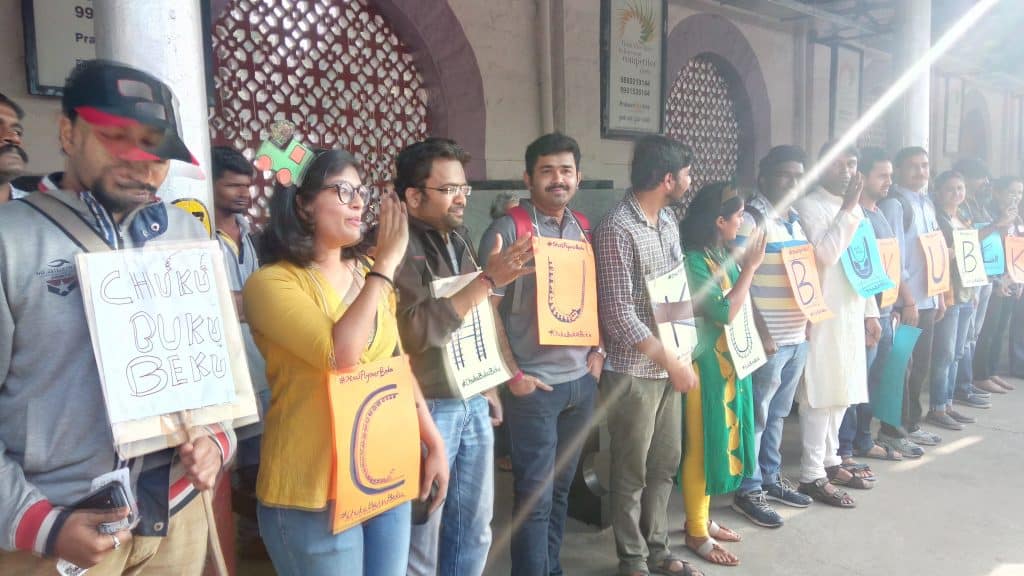On January 16, 2021, Citizen Matters arranged a discussion on Bengaluru’s Commuter Rail project with a panel of activists who have been campaigning for a rail-based extension to the suburbs. The conversation had Prakash Mandoth, Ex-Zonal Railway Users Consultative Committee; Rajkumar Dugar, Citizens for Citizens; Sanjeev Dyamannavar, Praja RAAG; Tara Krishnaswamy, Citizens for Bengaluru; Zibi Jamal, Whitefield Rising; and Sathya Sankaran of Praja RAAG speaking to Meera K and Bhanutej N from Citizen Matters.
Some progress
The Union Cabinet finally approved the Commuter Rail for Bengaluru in October 2020, a decade after the first intensive campaign for this service began in July 2010. Civil society organisations like Praja RAAG and Citizens for Bengaluru had led many organisations and individuals in demanding a suburban connection using Indian Railways train tracks around the city.
Only a few trains have started services December 2020 whereas the regional railway management promised over thirty-six services across the city in the short term, including to the International Airport.
But then…
It wasn’t long before the by-now familiar turf war raised its head. In January, reports suggested thatthe Bengaluru Metro objected to the suburban services to the airport claiming loss of riders to its planned line. This was not new to Sanjeev and me.
Since 2010, the leadership of the Metro has been opposing any other transport intervention along its planned alignment, whether it was commuter rail or bus lanes. The Metro’s management even questioned continuous bicycle lanes along its alignment, instead of getting cycling lanes to radiating outwards and feeding into it.
Fixing the problem
One solution is the Unified Metropolitan Transport Authority (UMTA) that had been in the works for quite a while. As I said, “Separating the planning and operations in government-run entities is important. Only an UMTA can ensure this”.
I did not empathise with this turf war, “For a population of more than a crore, this fight over ridership is ridiculous. Remember, there are over twenty-four thousand employees working at the airport, it’s easy to miss them for the air travellers when considering the services”.
Rajkumar Dugar of Citizens for Citizens called this unacceptable “The understanding with the airport commits to increasing services. We can’t take this opposition at face value. We have to oppose it”.
Getting people behind the idea
There was a long road ahead in making these services useful to people. One way is making informed demands to the stakeholders. Zibi Jamal of Whitefield Rising said “We have seen that coming together and demanding services has worked well. It helps if we have a well-articulated demand like the Praja Commuter Rail report did,”. Rajkumar Dugar added, “Getting into the technical details becomes important when you need to lobby hard,”.
Tara reflected on the importance of information for mobilising people “Growing up with access to commuter trains helped me understand its significance. The citizens of Bengaluru wouldn’t know that. We had to inform and spread awareness when we started the Chuku Buku Beku campaign”.

Will the project get on track now?
K-RIDE was the Special Purpose Vehicle (SPV) chosen to implement the Commuter Rail service. The cabinet approval pegged the 150 km network to cost Rs 18,000 crore.
Prakash Mandoth, Ex member Zonal Railway Users Consultative Committee, felt there will be delays in implementation. Sanjeev Dyamannavar, a seasoned campaigner for Commuter Rail from Praja RAAG, was more optimistic. “The next two years will see an increase in services and an aggressive effort might see project completion in five to six years.”
Sanjeev said that if we have to see this come to fruition, “the Chief Minister and other senior officials need to chair review meetings”. Prakash raised a concern, “Raising finances now will be tough for K-RIDE. Government will need to support it financially.”
The state government has given the SPV an initial grant of Rs 500 crore. They have announced that they will roll out services on a Public Private Partnership model. Monetisation of stations will supplement the fare-box revenue, and they are looking for external borrowings of up to sixty percent of the project cost.
Public engagement with the service was going to make all the difference in the long term. Tara was clear, “When we make decisions which affect local life from far-off places like New Delhi, it becomes difficult to influence the government. Therefore, decentralisation becomes important to get things done.”
Zibi was clear, “People coming together and demanding stations and accessibility is the way to go”. It reminded me of one suggestion we received in July 2012 during our campaign: mobilise people in the suburbs to whom this matters. Barring one meeting in Tumkur under the leadership of the elected representative Basavaraj, we could not pull this off in the suburbs. Ultimately the success of the service will be determined by how many people are using it. This also means that the SPV needs to run services matching the travel patterns of commuters on each segment.
Rajkumar summed it up “Use the service and ask for more”.
Watch the entire panel discussion here:
Also read: